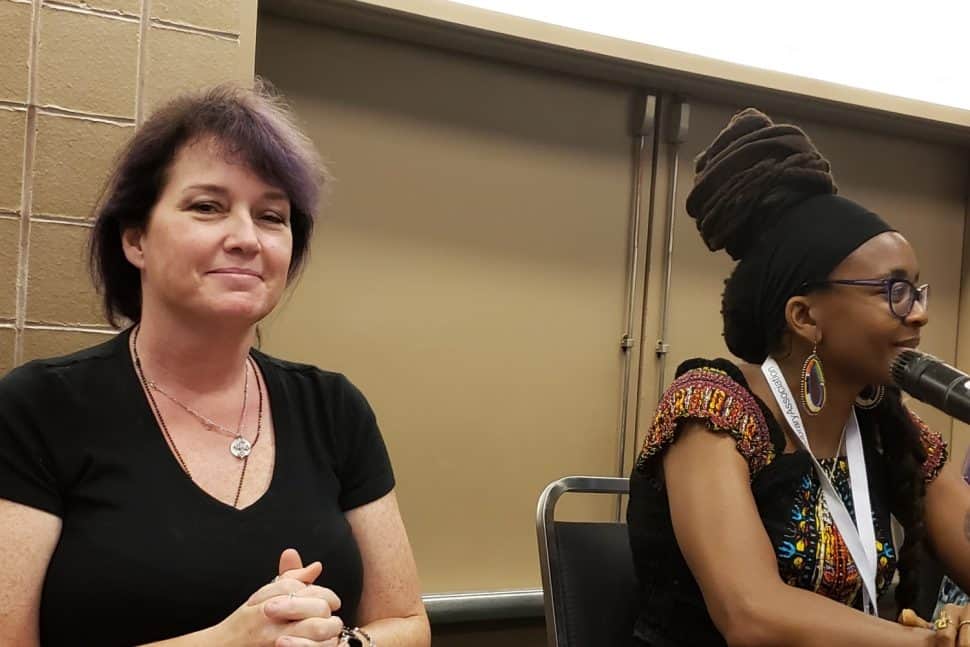
It’s not goggles and lab coats and test tubes. It’s not books like Chris Ferrie’s Quantum Physics for Babies and ABCs of Mathematics, much as parents might love them. And it’s not limited to digital technology.
So what does science, technology, engineering, and math (STEM) education for our youngest learners look like?
Librarians and early literacy experts explored that question at “STEM for Babies and Toddlers,” an Association for Library Service to Children–sponsored program at the American Library Association’s Annual Conference in New Orleans on June 23.
“Science is a way of thinking,” said Rachel Payne, coordinator of early childhood services at Brooklyn (N.Y.) Public Library (BPL). “Engineering is not just building structures, math is… not just counting. We want to help parents see that it’s more.” It’s important for caregivers to promote STEM activities because children learn by “testing and experimenting and exploring,” Payne said. And according to 2015 findings from the Institute of Medicine and the National Research Council, young children are capable of learning about STEM concepts and practices earlier in their development than originally thought.
Scientific concepts like categorization, comparisons, sorting, and cause-and-effect can be understood by infants and should be built into play. When a child drops a spoon from a high chair, for example, “it’s both a gravitational experiment and a social sciences experiment—how will Mom or Dad react?”
“We have to be able to unhide those concepts,” said Saroj Ghoting, an early childhood literacy consultant. “Parents are too quick to solve problems, so children aren’t learning problem-solving techniques.”
In encouraging problem solving, Ghoting said that caregivers should be patient when asking questions of toddlers who are beginning to process language, waiting at least 5-12 seconds (instead of the typical two seconds) for a response. But, she says, don’t shy away from using “the 50-cent words.” “Go ahead and talk about gravity,” Ghoting said. “They might not know the word but they know the action.”
To brainstorm the vocabulary and questions caregivers could be using with toddlers exploring their environments, Jessica Ralli, coordinator of early literacy programs at BPL, had the audience play with sheets of cellophane in the way they expected a young child would. Some attendees crinkled it, looked through it, bit or tasted it, balled it up, let it float to the ground, and experimented with overlaying different transparent colors over it.
“I heard a lot of people asking ‘What would happen if…?’ questions [during the exercise],” said Ralli, “and that’s really great for STEM thinking.”
That thinking translates well to programming. BPL and Everett (Wash.) Public Library (EPL) are two libraries structuring playtimes around frameworks of attention-focusing, measuring and counting, comparison, prediction, and problem-posing.
“We created a 90-minute drop-in model,” said Emily Dagg, manager of youth services at EPL. Staffers model STEM for parents and caregivers, rove around the room to demonstrate play with discovery toys, and give ideas for homework with postcard-sized handouts. Dagg says the biggest sign of the program’s success is that parents bring spouses, grandparents, extended family, “even the babysitter” to these drop-in events. “That was way more important than a handout,” she said.


